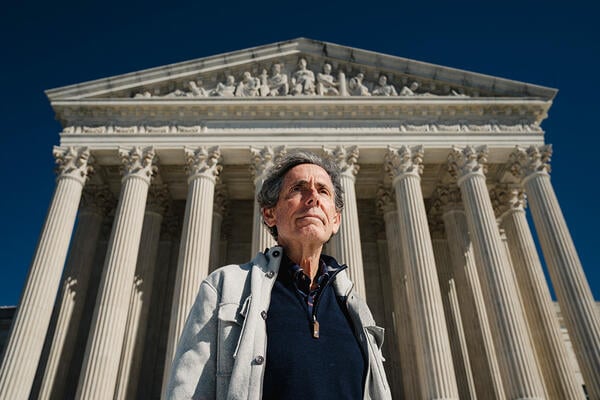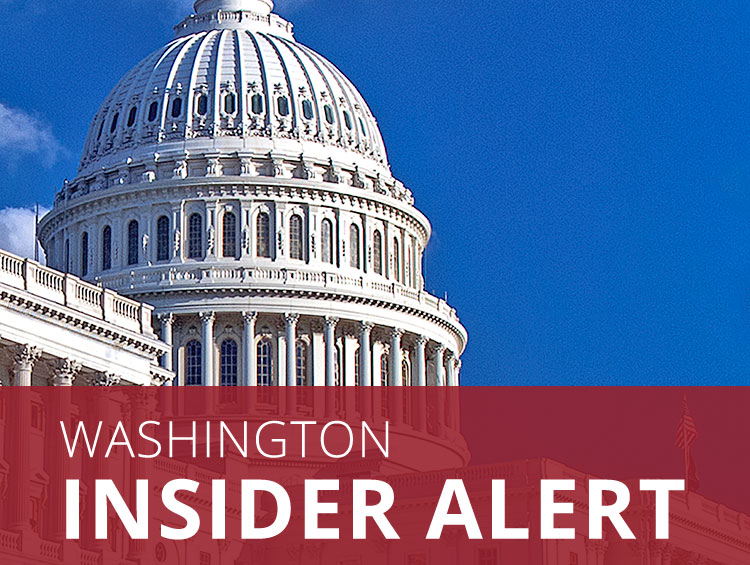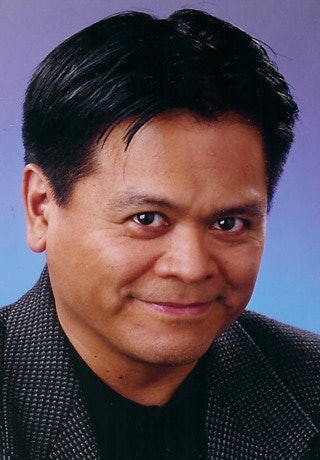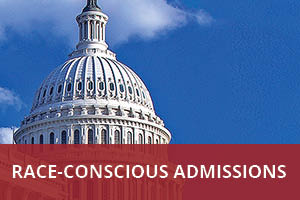Edward Blum isn’t quite a household name. But at the American Enterprise Institute in Washington, D.C., he’s a minor celebrity.
The conservative think tank has played host to an array of high-profile politicos, pundits, journalists and businesspeople over the years: Bill Gates, Mike Pence, Jordan Peterson, the Dalai Lama. Blum, who took affirmative action to the U.S. Supreme Court in 2023 and won, spoke at the institute earlier this month about his decades of legal activism.
It was something of a homecoming for the president of Students for Fair Admissions, who lives in Florida but has been a visiting fellow at AEI since 2005. It was also, in many ways, a victory lap.
Since the court ruled in his favor in Students for Fair Admissions v. Harvard and the University of North Carolina, Blum’s vision of what he calls a “colorblind covenant in public policy” has been ascendant, and in the new Trump administration, Blum’s zealous opposition to race-conscious programs has become a domineering force driving education policy.
Over the weekend, the Education Department’s Office for Civil Rights issued a letter outlining an expansive interpretation of the SFFA ruling and its plans to enforce a ban on all race-conscious programming in higher ed; colleges that don’t comply in 14 days could lose their federal funding. During her confirmation hearing Thursday, Education Secretary nominee Linda McMahon said ending “race-based programming” would be a priority if she were confirmed.
Blum, who spoke with Inside Higher Ed before the OCR letter was published, believes that affirmative action has long been unpopular—winning the public relations battle, he said, was “the easiest part of my job.” Still, he said the political, legal and cultural backlash against affirmative action and DEI over the past few years was affirming. In Trump’s Washington, Blum, who fought the courts unsuccessfully for decades, feels like an insider at last.
“It’s gratifying for those of us who have labored in this movement to see that now, rather than these policies being whispered about as unfair and illegal, there’s a full-throated cry against them,” he said.
The Trump administration’s adoption of Blum’s views on race in higher ed has also prompted another wave of backlash from Blum’s many critics, who say his work is undoing decades of progress toward racial equality and integration.
During his AEI session, Blum was asked about his own views on racial diversity on college campuses, constitutional law notwithstanding. He rejected the premise outright.
“The question implies that someone’s skin color is going to tell me something very fundamental about who they are as an individual. I don’t believe that’s the case,” Blum said. “Your skin color, the shape of your eyes, the texture of your hair tells me nothing about who you are. For some people, being on a campus with racial diversity is important … There are others that don’t seem to care about that.”
From Outsider to Agenda Setter
Blum has railed against race-conscious admissions for two decades. A former businessman in Houston, Blum, who has no law degree, founded the legal defense fund Project on Fair Representation in the mid-2000s. He challenged Texas’s reinstatement of race-based admissions in the second Fisher v. the University of Texas case; the case went to the Supreme Court but was ultimately defeated in 2016 when justices ruled that the university’s admission practices were constitutional.
Now, he’s not alone. A corps of public interest law groups has sprung up to litigate the SFFA decision in higher ed at prestigious law firms, on Wall Street and beyond. This month, a brand-new public interest legal group filed a lawsuit against the University of California system accusing it of secretly using racial preferences in admissions, citing increases in Black and Hispanic enrollment at its most selective colleges.
Blum said SFFA isn’t passing the buck and is committed to challenging universities on their compliance with the law, but a groundswell of efforts has lightened his load.
“The SFFA decision has energized the public interest law apparatus,” Blum said. He predicted that under Trump, the Education Department will also play a bigger role in investigating institutions for their compliance with the affirmative action ban. That forecast appears to be coming true with Friday’s Dear Colleague letter, though the agency still has to enforce the directive, a complicated prospect considering its broad scope.
Edward Blum (left) at the American Enterprise Institute on Feb. 5, with moderator Frederick Hess.
Blum supports the intensifying attacks on DEI and said that with more state laws forbidding spending on diversity and equity programs, there’s room for legal work to ensure colleges aren’t spending on “DEI by another name.”
But despite the high-profile political implications of his work, he doesn’t see himself as a political actor. In the late 1990s, he ran a failed congressional campaign in Houston, but the thought of running for office now evokes “overwhelming negative emotions.” And he’s careful to draw a line between his legal advocacy work and the anti-DEI crusades of conservative lawmakers.
“There is a 20-foot wall between the political people in the movement and the public interest groups,” he said.
‘A Forever Endeavor’
Blum is not finished suing colleges over affirmative action, or at least those he believes could be flouting the law. He’s particularly interested in selective colleges that reported similar or higher rates of Black and Hispanic enrollment this year, such as Yale, Duke and Princeton—a sure sign, he believes, that they’ve been “cheating.” SFFA has a “vibrant role to play,” he added, in holding them to account.
“So many of us are befuddled and concerned that in the first admissions cycle post-SFFA, schools that said getting rid of affirmative action would cause their minority admissions to plummet didn’t see that happen,” he said.
When asked if recent expansions to financial aid offerings at these universities could account for the change, Blum was circumspect. He’s not opposed to economically progressive admissions initiatives; he calls Rick Kahlenberg, a liberal proponent of “class-based affirmative action,” a like-minded friend. But he said the onus was on colleges to prove that’s the source of their continued racial diversity. He also said that geographic diversity initiatives would be unconstitutional if they only applied to “Harlem and the South Side of Chicago, and not also rural Missouri and northern Maine.”
Since the Supreme Court ruling, experts, college administrators and lawyers have debated whether the SFFA decision applies to race-conscious scholarships, internships and precollege programs as well as admissions. In the months after the ruling, attorneys general in Ohio and Missouri issued orders saying it did, and some colleges have begun to revise racial eligibility requirements on scholarships. At the same time, scholars and lawyers said implementing changes to nonadmissions programs amounted to overreach from state lawmakers and institutions alike.
Blum doesn’t actually believe the decision itself extends to those programs. He does think they’re illegal—there just hasn’t been a successful case challenging them yet.
“I haven’t really made myself clear on this, which is my fault, but the SFFA opinion didn’t change the law for those policies” in internships and scholarships, he said. “But those policies have always been, in my opinion, outside of the scope of our civil rights law and actionable in court.”
He’s still looking for a case that could enshrine his view in the law—two weeks ago McDonald’s settled a lawsuit he filed against their Latino scholarship program, putting that one out of contention. But he said that for the most part, in the wake of the SFFA decision, colleges have proactively altered or ended those programs themselves.
“Even if the ruling didn’t apply directly, it’s had this cascading effect,” he said.
That effect, Blum said, has spread to cultural and corporate institutions as well as higher ed, contributing to a general chilling effect on what he views as unconstitutional racial preferences in American society. It’s a major turnaround, he acknowledged, from the ubiquity of DEI initiatives and racial reckoning just five years ago after the murder of George Floyd.
While he’s relishing in the legal, political and cultural victory of his crusade, he’s not resting on his laurels.
“There are no permanent victories in politics,” Blum said, loosely quoting Winston Churchill. “The same applies to legal advocacy. This is a forever endeavor.”






